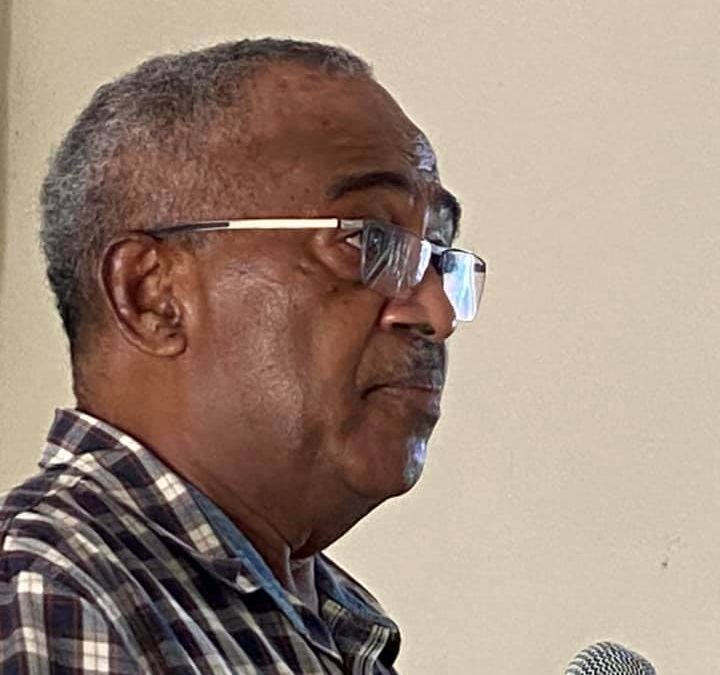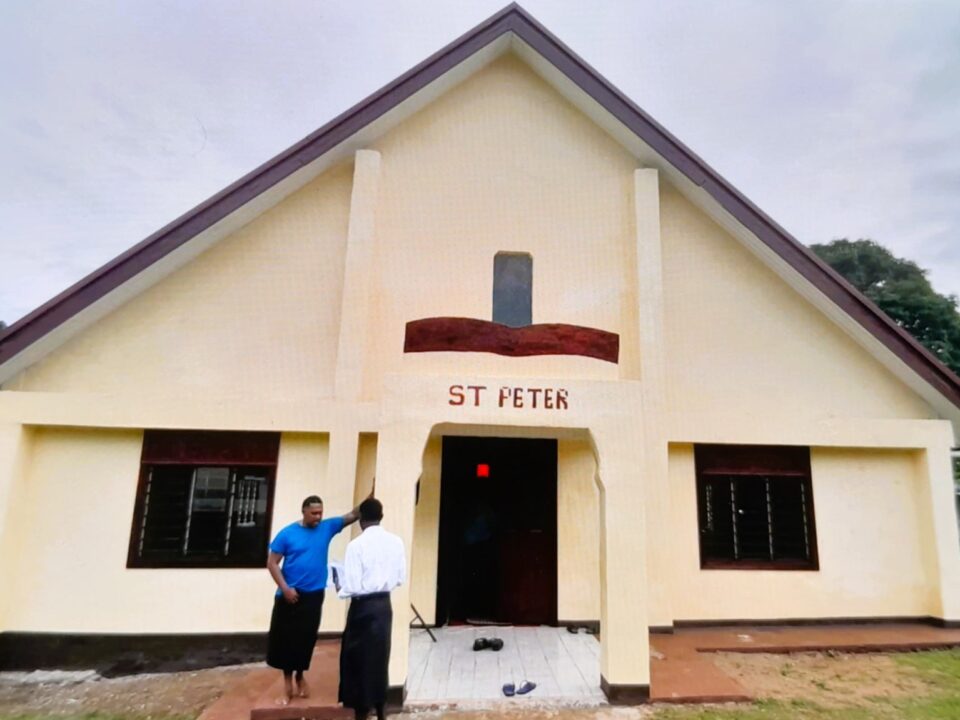MINISTERING IN COVID-19 / ECONOMIC CRISIS
by Aisake Komailevuka
____
Just before I share with you my personal experience and information on the Context: “Overall State of Tourism in Fiji”, please bear with my limitations of delivery. I will try to keep the presentation as interesting and interactive as possible – but it will be best to scheme through some facts and figures before we spend time on discussions. The economic downturn and high unemployment rate we experience in Fiji today have resulted from international travel restrictions because of the COVID-19 pandemic.
COVID-19 Pandemic Background
The COVID-19 outbreak began in late 2019 from Wuhan in China and has gradually become a pandemic in a relatively short period…today affecting 219 countries and territories. As at 6 February, 2021, more than 106.3 million cases have been recorded and 2.3 million people have died. Approximately, 78 million have recovered. Fiji has had 56 cases and 2 deaths. No new cases since February 3, 2020; 1 active border quarantine case. Our first case was recorded on March 19, 2020. The last 38 cases were travel associated and quarantined. Lab tests have been conducted on 26,917 people up to February 3, 2020.Australia and New Zealand our biggest tourism markets have had 28,848 cases and 2,315 cases respectively. French Polynesia [Tahiti] had 18,185 cases and 133 deaths. The Western Pacific as a region recorded the lowest number of cases. The highest is the Americas, Europe and South East Asia. For updated figures go to the WHO COVID-19 Dashboard.
Overall State of Tourism
Background – Fiji is predominantly a Services Economy [71%], Industries make up about 19% and the Agricultural, Forest and Fisheries make up the 10%. The Tourism sector is Fiji’s main revenue earner and contributes 38% to the national GDP. The Tourism sector supports over 118,000 jobs and channels spending to local supply chains, including agriculture, building and construction, cultural industries and many more – micro, small and medium enterprises [MSMEs] – the anchor investments are Destination / Accommodation and the MSMEs provide Food & Beverage, Transport, Travel Agencies, Recreation and Entertainment.
The biggest markets for our Tourism Industry are Australia 45, New Zealand 22% and America 10%. The UK/Europe is fourth largest and recently the Chinese market has begun to grow. These markets are critical to the Tourism Industry in Fiji – as long as these markets are closed; Fiji’s tourism industry will hibernate or remain closed.
Impact – Refer to IFC Report: Fiji COVID-19 Business Survey: Tourism Focus paper produced by IFC and MCTTT covering over 3,500 businesses – July, 2020
Note the data from this survey may not be applicable anymore; if anything, the figures are likely to have worsened.
Key findings of the Survey:
- 50% of tourism businesses are hibernating or fully closed
- 35% are active but with reduced staff
- 80% of non-tourism businesses are fully functional with reduced staff
- If borders do not open by end of 2020 – 29% of tourism businesses and 11% of non-tourism businesses are expected to be bankrupt i.e. around 500 businesses – this will be catastrophic for the tourism industry
- GDP is expected to contract by 21.7%
- Unemployment rate will increase by 27%
- Visitor arrivals dropped 51% in the first 4 months of 2020
- 27% of employees are on reduced pay and hours
- 25% on LWOP
- 8% made redundant
- Tourism revenue dropped 59%
- 20% of tourism businesses could not service their debt
- 42% Businesses could not pay rent
- 53% could not pay their leases
- Bookings in large businesses dropped 59%
- For MSMEs 43%
- 16% will start to default payments
For many businesses cashflow will be restrictive due to lack of demand for businesses:
- Lack of customer confidence will follow
- Long term impact of COVID-19 – compliance with COVID-19 protocols and restrictions
- Paying staff and suppliers
- Increased cost of raw materials and supplies
- Legal ramifications
- Repaying Loans and Credit
- Impact of Cyclone Harold in April, 2020
- Impact of Cyclone Yasa in December, 2020
- Impact of Cyclone Ana in January, 2021
What is the future like and how does it impact the way forward?
- In short, the future is bleak. We are deep in recession. More unemployment is predicted. Voluntary Separation now in progress at FIRCA
- As per the Government Budget, GDP is expected to contract by 22%…we expect this to worsen
- Economic growth for 2021 was forecast at minus 1.3%. I think it will be worse.
- Government is dependent on loans and keeps on borrowing from the World Bank, IMF and ADB
- These loans supplement unemployment payouts…how long will this go on for is not clear.
- We will have more crises…like natural disasters and unemployment related setbacks and we need to fund recovery plans
- We have to repay national debts. For 2021 we need to pay $1.2 billion. Current Government Debt is in excess of $6.705 billion – $4.0 billion more than when this Government took over in the last 13 years. Many reports say that the current national debt is in excess of FJD8.0 billion
- During the year people and schools on the tourism belt depended on NGOs and Charities to help with Food supplies as people began to feel the real struggle to put food on the table.
- FNPF members have access to their funds…there are many who are not FNPF members? Where do they get their money from?
- Reforms in the sugar industry still to happen
- Visitor arrivals was forecast at 447K+…this will be 0
- TELs removed in Education for various study streams – new MBBS scholarships removed
- The Bula Bubble will not happen anytime soon…borders will remain closed for most of 2021 until mid-2022. Other reports predict full international air travel will not resume until 2023…many airlines would be bankrupt by then.
- People are planting and going to the sea for subsistence
- People returning to villages to live…especially they cannot afford rent and suburban lifestyles
- Health systems are deteriorating
- Cost of food and medicine going up
- Education may not be sustained – health restrictions are being enforced at Schools and Boarding facilities
What is the Church’s role in economic crisis
- Use the crisis to create opportunities to “reset”. Base your response on the doctrines of CST…a very powerful way to uplift and empower the dignity of a person and work towards the common good.
- Challenges facing the church are human dignity, family life, poverty, health, inequality, ecological justice / climate change, education, solidarity and subsidiarity to mention a few
- Preach the need to live simply – practice austerity and economize and improvise. Practice self denial and fasting…a very good start is this upcoming Lenten season
- Speak out strongly on issues of social justice and the common good.
- Encourage Family life and solidarity and use the curfew regulations to reset values of discipline and sacrifice.
- Plant and live off the land and the sea; protect the environment for the future generations.
- Share with the needy and the struggling – a real way to live the values of the Gospel.
- Practice lifestyle changes and move away from activities that do not add value to good family living.
- Encourage the importance of a good and rounded education to support a stable outlook and build on a future with renewed confidence.
- Practice inclusivity – learn from the experience of others, instill a sense of hope for everyone…even the marginalized has a story to tell…learn from their experience and stand up for the voiceless.
***End.




